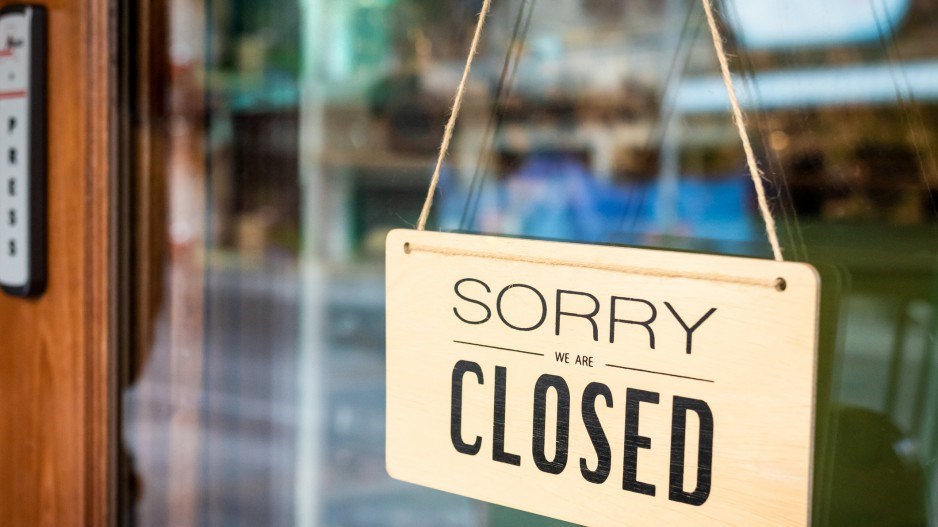B.C. continued its historic job market slide in April due to the COVID-19 pandemic and lockdown, seeing the unemployment rate spike to 11.5% in April from 7.3% the previous month, Statistics Canada said Friday.
“These numbers really are staggering,” B.C. Minister of Finance Carole James said.
The provincial figures follow the general trend across the nation, where every province reported an unemployment rate higher than 10%. According to Statistics Canada, the overall job losses since February (15.7%) “far exceeds declines observed in previous labour market downturns.” For comparison, the 1981-1982 recession saw an employment decline of only 5.4% during its 17 months.
“The personal and economic pain that COVID-19 has caused across the globe really is unprecedented in our lifetime,” James said.
She said B.C.’s unemployment rate has leapt from 5% in February to 11% in March.
In total, B.C. lost a staggering 264,100 jobs from March to April (and down 420,9000 compared with the same period last year). About 194,900 of those positions lost were full-time positions, statistics show.
Statistics Canada also said Metro Vancouver was among the hardest-hit metropolitan areas in the country, with employment from February to April falling 17.4% (or 256,000 jobs), outpacing Toronto (15.2% / 539,000) and only “bested” by Montreal (18% / 404,000). In April, the Vancouver CMA saw an unemployment rate of 10.8%, up 6.2 percentage points from March.
Provincially, the biggest declines in employment came in the services-producing sector (217,200 job losses), with accommodation/food services (75,700), wholesale/retail trade (35,500) and health care/social assistance (20,400) suffering the biggest losses on that front. B.C. also saw a loss of 34,100 jobs in the construction sector on the goods-producing side of the economy, the report said.
James said the picture would become even more clear as the May and June numbers arrive.
“I think we’ve got a hard road ahead,” she said.
On the national front, the unemployment rate now sits at 13% - up 5.2 percentage points from March after the country lost almost 2 million positions in April. Statistics Canada added the number could have been even worse if figures were adjusted to include people who weren’t counted as unemployed for “reasons specific to the COVID-19 economic shutdown.” That figure, Statistics Canada said, would have been 17.8%.
“They were not counted as unemployed, but were counted as not in the labour force because they did not look for work, presumably due to ongoing business closures and very limited opportunities to find new work,” the Statistics Canada report said.
“They wanted work but didn’t look for work because of the lack of opportunities due to COVID-19,” James said.
James said the province has processed and approved more than 400,000 applications for B.C.’s one-time $1,000 B.C. Emergency Benefit for Workers to supplement federal assistance.
Nationally, Quebec - which is also the province hardest hit by COVID-19 - also saw the highest unemployment rate at 17%.
In his analysis, BMO chief economist Douglas Porter said the numbers, while large, were actually “considerably smaller than the consensus view.” Porter said most analysts had been looking for a job drop of closer to 4 million - given that more than 7 million Canadians had applied for the Canada Emergency Benefit.
“The 5.2 percentage point rise in the jobless rate was considerably less than expected, and massively smaller than the 10.3 ppt spike in the U.S. jobless rate,” he said in the statement. “The big story here was a 3.7 ppt plunge in Canada’s participation rate to 59.8%, as more than 1 million [people] dropped out of the labour force.”
The U.S. drop in participation, Porter noted, was 5.2 percentage points. At 60.2%, this marks the first time since 2002 that the U.S. participation rate sits higher than its Canadian counterpart.
However, Port was also optimistic that - with “cautious re-openings” underway - an employment rebound may be in store for June and July.
James said Wednesday’s announcement by Premier John Horgan of a phased reopening of the province means business will be working with health guidelines
James said the impact on government income would be seen in the government’s first quarterly report later this year.
“It’s going to have an impact on our budget,” she said. “There’s no question it will have an impact on our economy.” James said growth is projected to fall by 4% to 7%.
– With files from Jeremy Hainsworth




